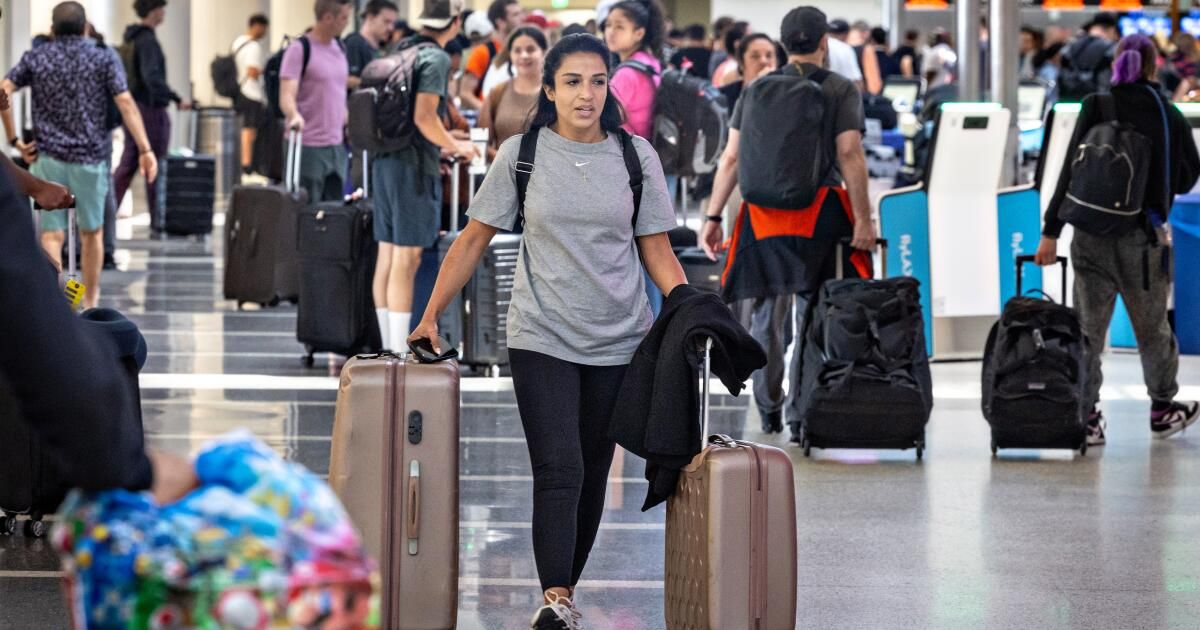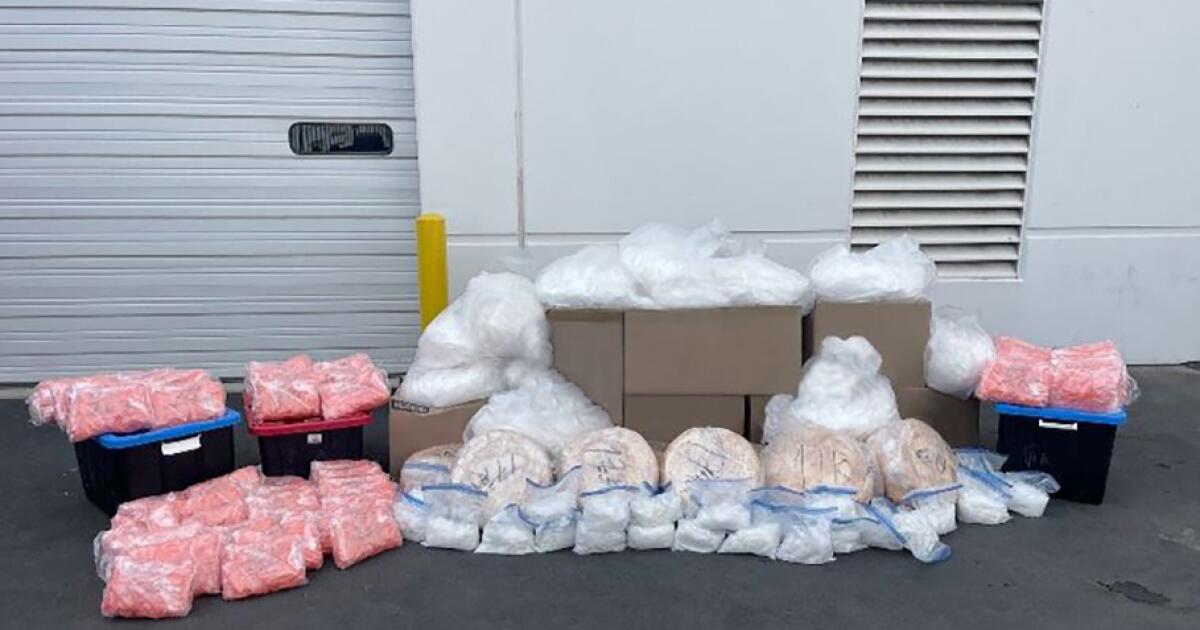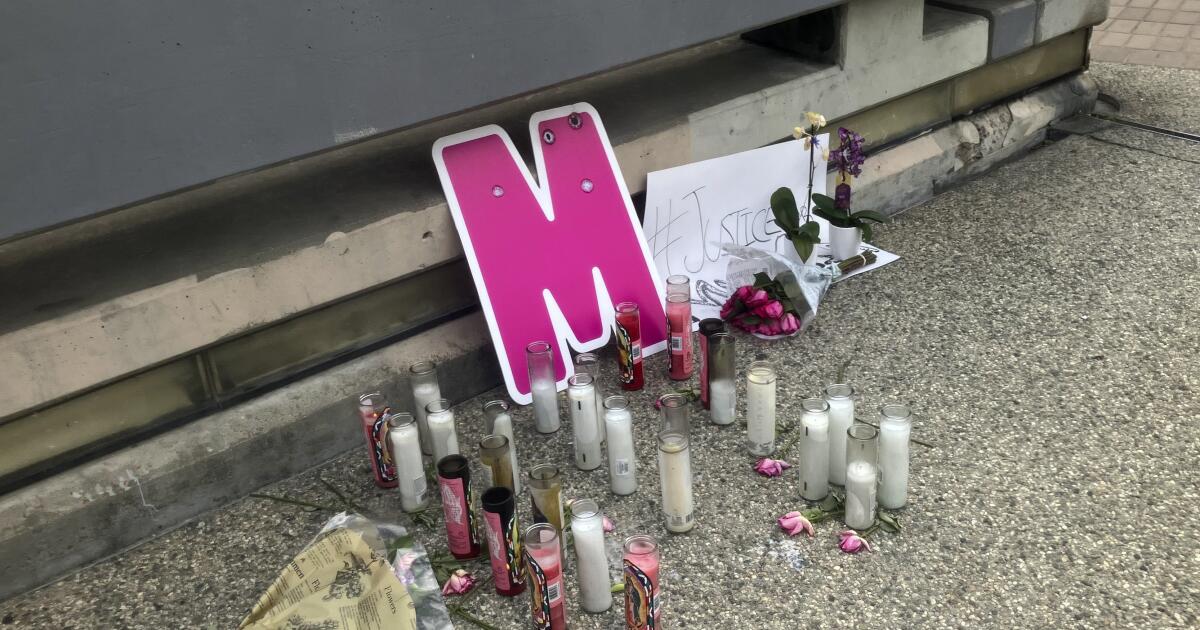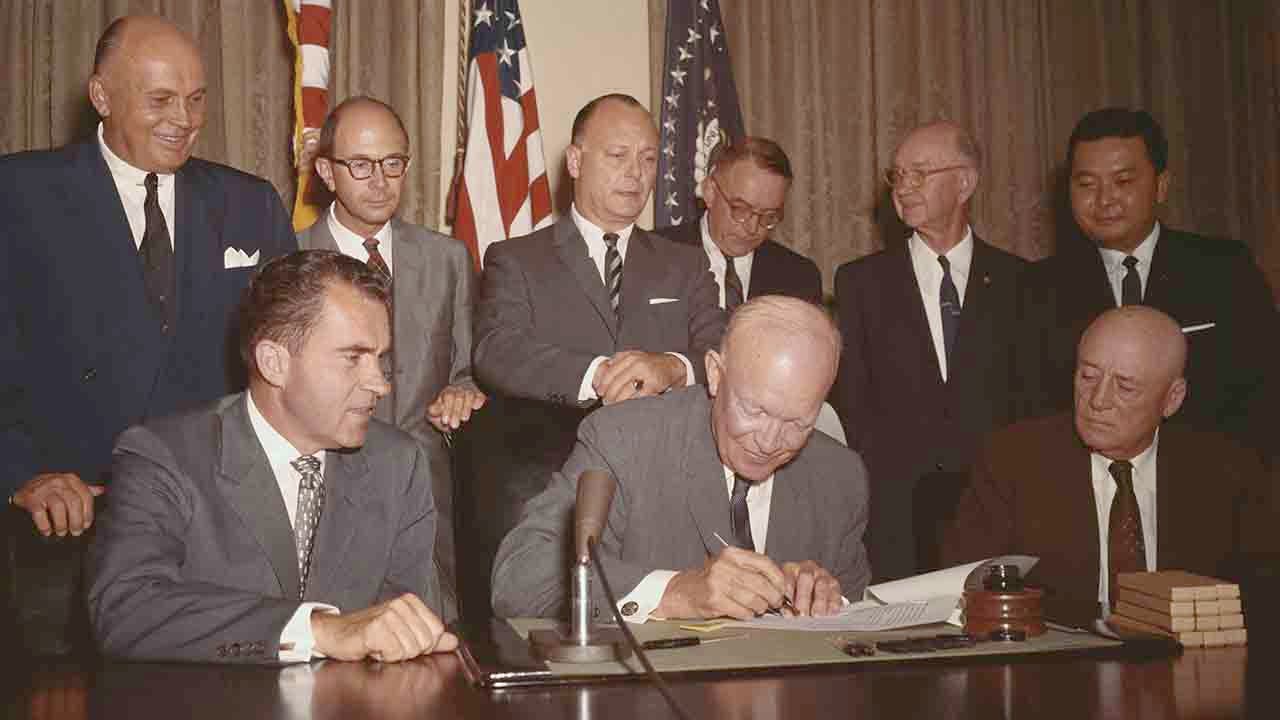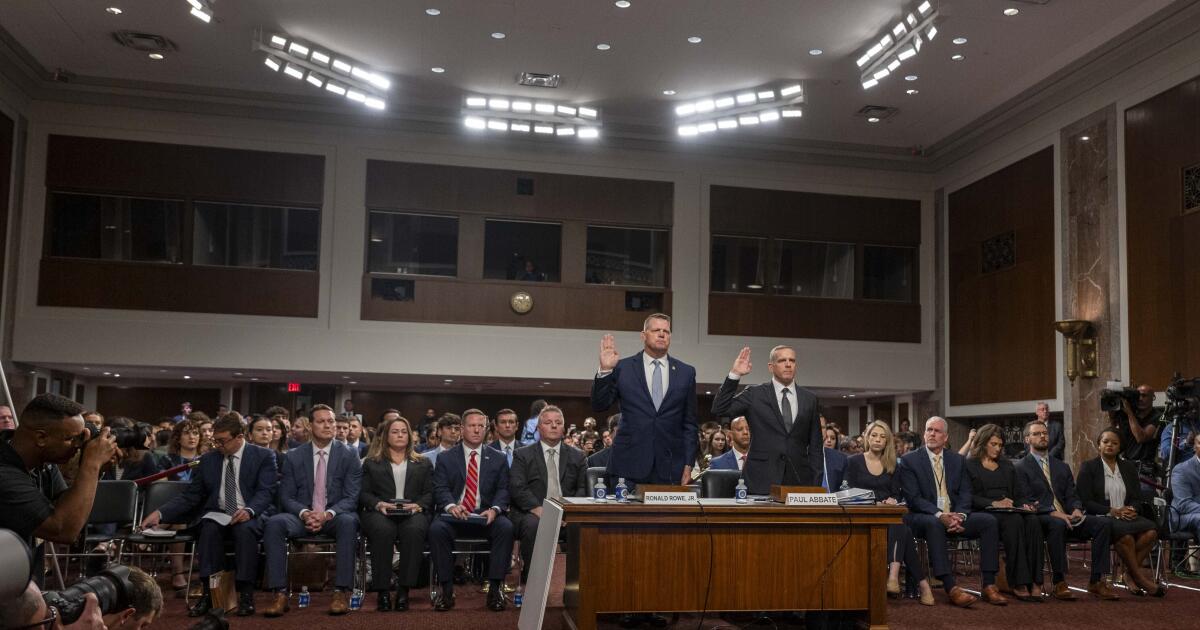Summer travel is helping to drive a surge in COVID cases in California and other parts of the country.
There are growing reports of Democratic National Convention attendees contracting COVID-19. At least a dozen people from California — delegates, political strategists and journalists — said they tested positive after the Democratic National Convention concluded last week in Chicago.
Democratic strategist Tracy Austin, who contracted COVID while attending the convention, told The Times: “It was an incredible moment, but last week the DNCC stood up for the Democratic National Convention against COVID.”
The next big test for the COVID spike is just around the corner.
Doctors will be watching closely to see whether the back-to-school season and the Labor Day holiday weekend worsen the surge. Last week, officials at the U.S. Centers for Disease Control and Prevention said some data suggest a slowdown in new coronavirus infections in parts of the country. But a drop in the summer surge won’t be obvious until there are several weeks of sustained declines, which hasn’t happened yet.
Crowded airports and large indoor events have long been shown to increase the spread of the coronavirus, and this summer has seen record-breaking travel. The Transportation Security Administration said June 23 saw the most passengers screened in a single day since the agency’s creation: 2.99 million. Southern California airports have also reported large increases in passenger volume.
Many Democratic National Convention events were held indoors, where the risk of infection for large groups is higher.
“That will happen any time you get nearly 25,000 people together in a stadium, in hotels and on buses for four days, no matter the occasion,” said Robin Swanson, a spokeswoman for the California Democratic Party. “But the biggest takeaway from our convention is the enthusiasm for electing Democrats across the country.”
Dr. Elizabeth Hudson, regional chief of infectious diseases for Kaiser Permanente Southern California, said her first thought as a physician watching the Democratic National Convention was, “Oh no, almost no one is wearing a mask.”
He said he remembered thinking, “There are probably going to be a lot of COVID cases as a result of this.”
“In an enclosed space, you have a lot of people talking, laughing and shouting, which is actually a more efficient way to spread COVID,” Hudson said. “Between all that… exposure time, we’re definitely going to see COVID.”
Although masks have fallen out of fashion, they are still an effective tool to help prevent COVID-19, along with avoiding sick people, spending more time outdoors or in well-ventilated areas, washing or sanitizing your hands frequently, and staying up to date on vaccinations.
“When you travel, if you’re going to be in an enclosed space with a lot of people, to really reduce your risk of testing positive for COVID-19, you should wear a mask,” Hudson said.
And “if you're on a plane, if you're in an airport, those are the times when you really want to make sure you're wearing a mask,” she added.
Updated COVID-19 vaccines for the 2024-25 season are expected to be available this week and globally sometime in September.
There are several reasons why this summer COVID wave has been surprisingly strong.
One is the emergence of successive hyperinfectious subvariants of the coronavirus. In the spring, some of the subvariants collectively nicknamed FLiRT, including KP.2, began a wave in the middle of the year. This was followed by increasingly contagious successor subvariants: KP.3 (nicknamed FLuQE, pronounced “fluke”) and the latest, KP.3.1.1 (nicknamed deFLuQE, pronounced “de-fluke”).
In the latest subvariant, KP.3.1.1, “the particular variation that emerged in this mutation was a little bit different than what people had seen with natural immunity or with the vaccines that we had available,” Hudson said.
“Because of that, it was much easier to reach a population where people’s natural and vaccine-induced immunity was at its lowest,” Hudson said, with many people nearly a year or more after their last vaccination or their last COVID-19 illness.
There are now 26 states, including California, where COVID-19 is projected to be “growing” or “likely growing.” That’s down from 44 states about six weeks ago, according to the CDC.
The rate of positive coronavirus tests continues to rise in California. In the week ending August 19, 14.4% of reported tests were positive. This is higher than peaks seen last summer and winter, and up from 11.5% a month ago.
Overall, coronavirus levels in California wastewater have remained largely stable in recent weeks, but remain at their highest level of the season.
How to protect yourself
- If you're sick, get tested every day. Sometimes a rapid test takes longer to turn positive after the onset of illness. If an initial test is negative, you may still have COVID-19. Consider getting tested again every day, up to five days after the onset of cough and cold symptoms, Hudson said. A positive test can help you take steps to isolate yourself more quickly and limit the spread of the disease.
- Have a plan to ask for Paxlovid if you get sick. Paxlovid is an antiviral medication that, when taken by people at risk for severe COVID-19 with mild to moderate symptoms, reduces the risk of hospitalization and death. There are also other COVID medications, such as molnupiravir, which is also taken by mouth, and remdesivir, which is administered intravenously.
- People with a moderately or severely compromised immune system may also receive a drug called pemivibart, brand name Pemgarda. This drug, given intravenously in a medical facility over an hour, helps prevent COVID-19 before a person is exposed to the virus, but it is not a substitute for vaccines.
- Wearing a mask, especially on crowded flights or in other enclosed spaces, can help reduce the risk of infection.
- The CDC recommends that people stay away from others until at least 24 hours after their symptoms improve and they have no fever (and are not using fever-reducing medicines). The agency suggests taking extra precautions for five days (such as wearing a well-fitting mask and continuing to get tested for COVID, in case of a viral surge) to avoid making others sick.
- In addition to the CDC recommendations, the Los Angeles County Department of Public Health also recommends getting a rapid test and getting a negative result before leaving isolation. The agency recommends wearing a mask for 10 days when you are around others after you start feeling sick or, if you are asymptomatic, after your first positive COVID test. You can take off your mask sooner if you have two consecutive negative COVID tests, taken at least one day apart. The agency also suggests staying away from older people and people who are immunocompromised for 10 days after you start feeling sick.
-
In general, tips like these also reduce the risk of a coronavirus infection: keeping your distance from other people, increasing air circulation by opening windows, turning on air purifiers, gathering outdoors if there are people around, and maintaining enhanced hygiene: washing and disinfecting your hands frequently, cleaning frequently touched surfaces, and covering your mouth when coughing and sneezing.
Additional CDC Travel Advice
- Make sure you are up to date on all your routine vaccinations. These protect you from infectious diseases, such as measles, that can spread quickly in groups of unvaccinated people. Many diseases prevented by routine vaccination are not common in the United States but are common in other countries.
- Getting vaccinated against COVID-19 and the seasonal flu vaccine are among the steps people should take in the United States. The CDC recommends getting vaccinated against COVID-19 and the flu in September or October.
- Prepare a travel kit with items you may need, especially those that may be difficult to find at your destination. Include prescription and over-the-counter medications and bring enough for your entire trip, plus something extra in case of travel delays. Depending on your destination, you may also want to pack a mask, insect repellent, sunscreen (SPF 15 or higher), aloe, alcohol-based hand sanitizer, water disinfectant tablets, and your health insurance card.
Mehta reported from Chicago and Lin from San Francisco.

